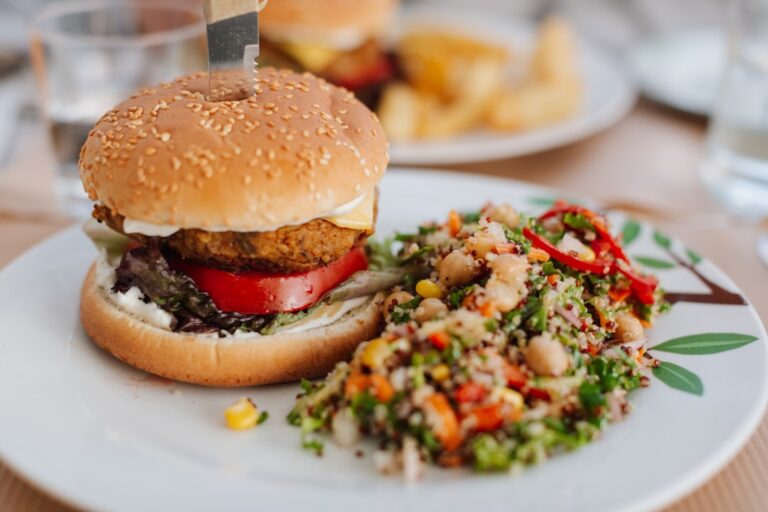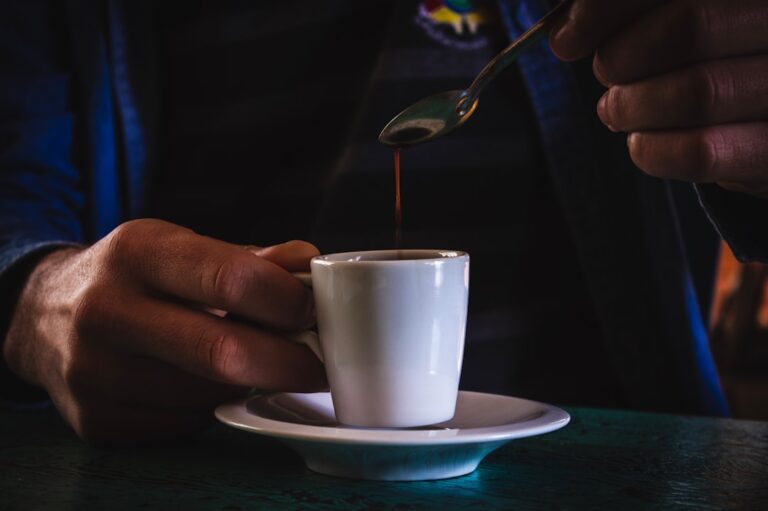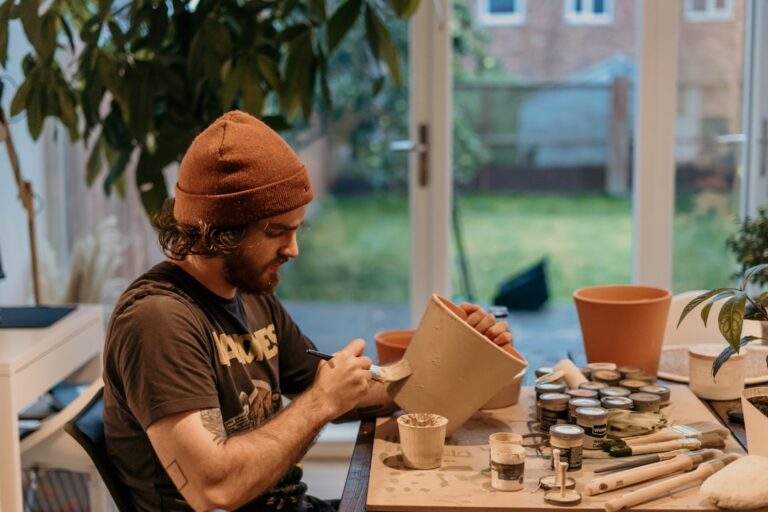Baking requires specific tools and equipment to achieve optimal results. Essential items include measuring cups and spoons for precise ingredient measurements, mixing bowls for combining ingredients, and a stand or hand mixer for beating and creaming. A rolling pin is necessary for flattening dough, while baking sheets and various pans (cake, muffin, and loaf) are used for different baked goods.
These tools form the foundation of a well-equipped baking kitchen. Specialized items enhance baking capabilities. A pastry brush is used for applying egg washes or glazes, while a pastry cutter helps incorporate butter into flour for pie crusts and biscuits.
A kitchen scale provides accurate weight measurements, particularly important for bread baking. A cooling rack ensures even cooling of baked items after removal from the oven. These additional tools contribute to a more efficient and effective baking process.
Key Takeaways
- Invest in essential baking tools like a good quality mixer, measuring cups and spoons, mixing bowls, and a reliable oven thermometer for accurate baking results.
- Understand the functions of key baking ingredients like flour, sugar, leavening agents, and fats to achieve the desired texture and flavor in your baked goods.
- Perfect your baking techniques by practicing proper mixing, folding, and shaping methods, and understanding the importance of temperature and timing in baking.
- Troubleshoot common baking problems such as uneven rising, over-browning, and sinking in the middle, by adjusting oven temperature, ingredient ratios, and baking time.
- Explore baking for special dietary needs by learning about gluten-free and vegan baking alternatives, and experimenting with alternative sweeteners and flours.
- Master the art of decorating baked goods with piping techniques, fondant, and icing, and learn how to use edible decorations to enhance the visual appeal of your creations.
- Start your baking journey with simple recipes and step-by-step instructions for classic treats like chocolate chip cookies, banana bread, and vanilla cupcakes.
Understanding Baking Ingredients and their Functions
The Foundation of Baking: Flour
Flour is the foundation of most baked goods and provides structure and texture. There are various types of flour, including all-purpose, cake flour, bread flour, and whole wheat flour, each with its own unique properties.
Sweetness and More: Sugar and Fats
Sugar not only sweetens baked goods but also contributes to their tenderness, moisture retention, and browning. There are different types of sugar, such as granulated sugar, brown sugar, powdered sugar, and more, each with its own specific uses in baking. Fats like butter, oil, and shortening add richness and moisture to baked goods while also contributing to their texture and flavor.
Binders, Leavening Agents, and Flavor Enhancers
Eggs act as binders and leavening agents in baking, helping to hold ingredients together and provide structure. Leavening agents such as baking powder and baking soda are essential for making baked goods rise and become light and airy. Salt enhances the flavor of baked goods and helps to balance out sweetness. Lastly, liquids like milk, water, and buttermilk add moisture to batters and doughs while also contributing to the overall texture of the finished product. Understanding how each ingredient functions in baking will help you make informed decisions when following recipes or experimenting with your own creations.
Tips for Perfecting Your Baking Techniques

Perfecting your baking techniques takes time and practice, but there are several tips that can help you achieve better results in the kitchen. One important tip is to always preheat your oven before baking. This ensures that your baked goods will cook evenly and consistently from the start.
Another tip is to accurately measure your ingredients using the appropriate measuring tools. Baking is a science, and precise measurements are crucial for achieving the desired texture and flavor in your finished products. It’s also important to follow recipes closely, especially when you’re new to baking.
As you gain more experience, you can start to experiment with different ingredients and techniques, but it’s best to start with tried-and-true recipes until you feel more confident in your skills. Another tip for perfecting your baking techniques is to invest in an oven thermometer to ensure that your oven is heating to the correct temperature. Ovens can often be off by several degrees, which can significantly affect the outcome of your baked goods.
Lastly, don’t be afraid to make mistakes! Baking is a learning process, and even experienced bakers encounter failures from time to time. Learn from your mistakes and use them as opportunities to improve your skills.
How to Troubleshoot Common Baking Problems
| Common Baking Problem | Possible Cause | Solution |
|---|---|---|
| Flat or Sunken Cake | Overmixing, expired leavening agents | Use fresh leavening agents, avoid overmixing |
| Burnt Edges | Uneven oven temperature | Use an oven thermometer, rotate pans during baking |
| Dry or Dense Texture | Overbaking, too much flour | Check for doneness earlier, measure flour accurately |
| Sunken Center | Underbaking, opening oven door too soon | Use a toothpick to check for doneness, avoid opening oven door too soon |
Even the most experienced bakers encounter common baking problems from time to time. One common issue is cakes or bread that sink in the middle after baking. This can happen if the batter or dough is overmixed or if the oven temperature is too high.
To prevent this problem, be sure to mix your batter or dough just until the ingredients are combined and follow the recommended oven temperature in the recipe. Another common problem is cookies that spread too much during baking. This can occur if the dough is too warm or if there is too much fat in the recipe.
To prevent this issue, chill your cookie dough before baking and consider reducing the amount of fat in the recipe. Cracks on the surface of cakes or bread are another common problem that bakers encounter. This can happen if the oven temperature is too high or if the batter or dough contains too much leavening agent.
To prevent cracks, be sure to follow the recommended oven temperature in the recipe and measure your leavening agents accurately. Lastly, dense or tough baked goods can result from overmixing the batter or dough. To avoid this issue, mix your batter or dough just until the ingredients are combined and avoid overworking it.
Troubleshooting common baking problems takes patience and practice, but with time and experience, you’ll become better at identifying and preventing these issues.
Baking for Special Dietary Needs: Gluten-Free, Vegan, and more
Baking for special dietary needs such as gluten-free or vegan diets requires some adjustments to traditional recipes. For gluten-free baking, it’s important to use alternative flours such as almond flour, coconut flour, rice flour, or a gluten-free all-purpose flour blend. These flours have different properties than wheat flour and may require additional ingredients such as xanthan gum or guar gum to help bind the ingredients together.
It’s also important to use gluten-free baking powder and baking soda to ensure that your baked goods rise properly. For vegan baking, traditional ingredients like eggs, butter, and milk need to be replaced with plant-based alternatives. For example, mashed bananas or applesauce can be used as egg substitutes, while coconut oil or vegan margarine can be used in place of butter.
Non-dairy milk such as almond milk or soy milk can be used instead of cow’s milk in recipes. It’s also important to be mindful of other non-vegan ingredients such as honey or gelatin that may be present in certain recipes. With some experimentation and creativity, it’s possible to create delicious baked goods that cater to special dietary needs.
Mastering the Art of Decorating Baked Goods

Popular Decorating Methods
One popular method of decorating cakes and cupcakes is using buttercream frosting, which can be piped into various designs using different piping tips. Fondant is another popular choice for decorating cakes and can be rolled out and shaped into intricate designs. For cookies and pastries, royal icing can be used to create detailed designs and patterns.
Adding a Festive Touch
Edible decorations such as sprinkles, edible glitter, and edible flowers can also add a festive touch to baked goods.
Tools and Techniques for Decorating
When it comes to decorating bread, simple scoring techniques can create beautiful patterns on the surface of loaves. It’s important to have the right tools on hand for decorating baked goods, such as piping bags, piping tips, offset spatulas, and food coloring gels. With practice and patience, you can master the art of decorating baked goods and create stunning treats that are as beautiful as they are delicious.
Baking for Beginners: Simple Recipes and Step-by-Step Instructions
For beginners who are new to baking, starting with simple recipes is a great way to build confidence in the kitchen. Classic recipes like chocolate chip cookies, banana bread, and vanilla cupcakes are great options for beginners because they are relatively easy to make and require minimal equipment. Following step-by-step instructions is key when starting out with baking, so be sure to read through the recipe carefully before getting started.
It’s also helpful to watch tutorial videos or take a baking class to learn basic techniques such as creaming butter and sugar, folding in dry ingredients, and testing for doneness. As you gain more experience, you can start to experiment with different flavors and ingredients to create your own unique recipes. Don’t be afraid to make mistakes along the way – every baker starts somewhere!
With practice and patience, you’ll soon become more comfortable in the kitchen and develop your own signature baking style.
If you’re looking for more baking tips and tricks, check out this article on AllerDining that provides helpful advice for baking with food allergies. AllerDining offers valuable information on how to adapt recipes and ingredients to accommodate various dietary restrictions, ensuring that everyone can enjoy delicious baked goods safely. Whether you’re dealing with gluten, dairy, nut, or other allergies, this article has great tips for making baking accessible to all.
FAQs
What are some essential baking tips for beginners?
Some essential baking tips for beginners include accurately measuring ingredients, preheating the oven, following the recipe instructions, and allowing ingredients to come to room temperature before using them.
How can I prevent my baked goods from sticking to the pan?
To prevent baked goods from sticking to the pan, you can grease the pan with butter or cooking spray, line it with parchment paper, or use non-stick baking pans.
What are some common baking mistakes to avoid?
Some common baking mistakes to avoid include overmixing the batter, not preheating the oven, opening the oven door too often, and not allowing baked goods to cool properly before removing them from the pan.
How can I make my baked goods more moist and tender?
To make baked goods more moist and tender, you can use ingredients like buttermilk, sour cream, or yogurt, and avoid overbaking them. You can also brush the baked goods with simple syrup or a sugar glaze to add moisture.
What are some tricks for decorating baked goods?
Some tricks for decorating baked goods include using a piping bag with different tips for frosting, using edible glitter or sprinkles for added flair, and using stencils or cookie cutters to create decorative shapes.







+ There are no comments
Add yours